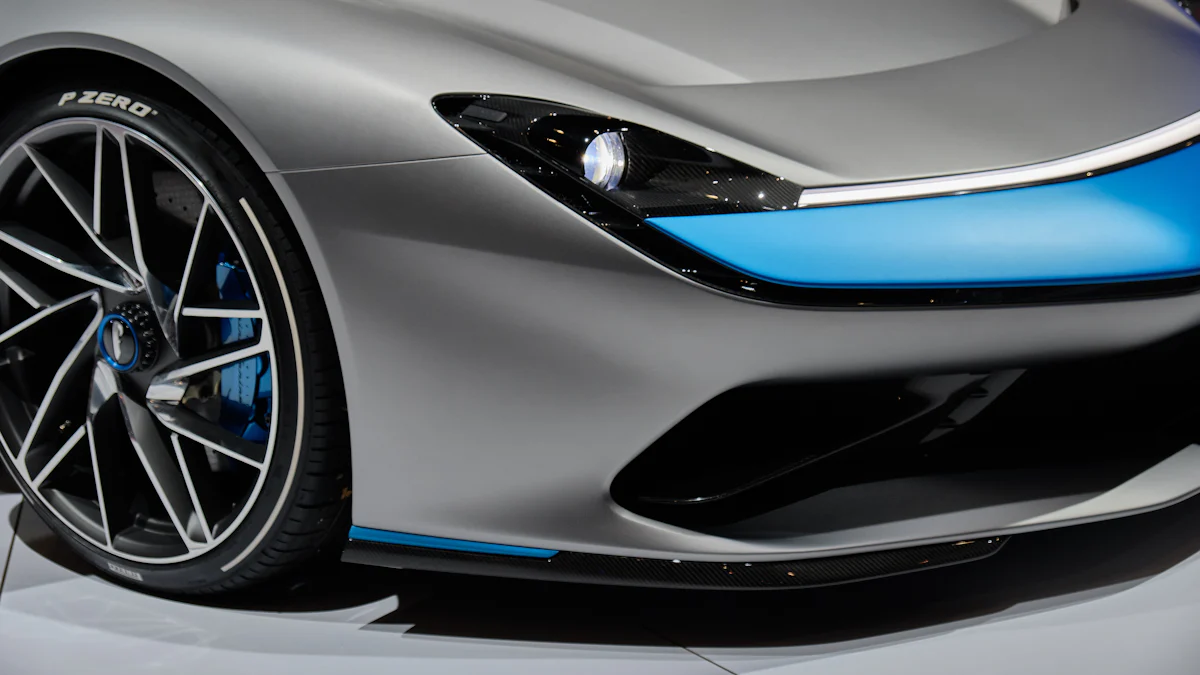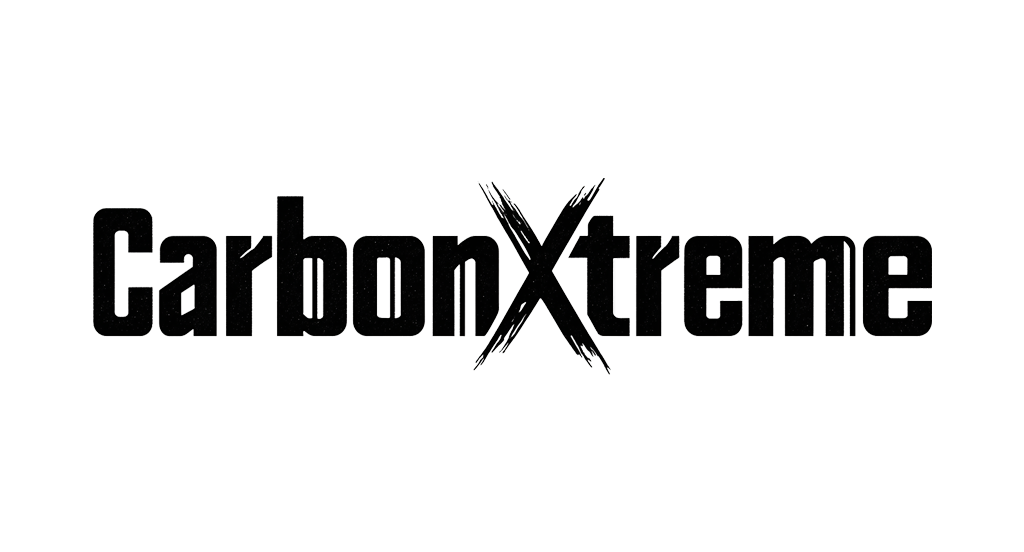Discover the Ultimate Rear Diffuser Materials

Choosing the right material for your rear diffuser is crucial for enhancing both performance and aesthetics. The top materials include:
Carbon Fibre: Known for its lightweight and high strength.
Aluminium: Offers durability and resistance to corrosion.
Fibreglass: Provides a balance between cost-effectiveness and customisability.
ABS Plastic: Highly affordable and easy to shape.
Rear diffusers play a vital role in reducing aerodynamic drag, improving fuel efficiency, and enhancing vehicle stability. Selecting the appropriate material can significantly impact these benefits, transforming your driving experience.
Carbon Fibre Rear Diffuser

Advantages of Carbon Fibre
Lightweight and high strength
You will find carbon fibre to be an exceptional choice for a rear diffuser due to its lightweight nature and remarkable strength. This material stands out because it offers a high strength-to-weight ratio, which is crucial for enhancing your vehicle’s performance. By reducing the overall weight, carbon fibre allows for better acceleration and handling, making your driving experience more exhilarating.
Aesthetic appeal and premium look
Carbon fibre also provides a sleek and modern appearance that many car enthusiasts desire. Its unique weave pattern and glossy finish add a touch of luxury to your vehicle, elevating its aesthetic appeal. You will appreciate how a carbon fibre rear diffuser can transform the look of your car, giving it a more aggressive and sporty stance.
Drawbacks of Carbon Fibre
High cost
However, you should be aware that carbon fibre comes with a higher price tag. The production process involves expensive materials and skilled labour, which contributes to its premium cost. If budget constraints are a concern, you might need to weigh the benefits against the financial investment required.
Susceptibility to damage
While carbon fibre is strong, it can be susceptible to damage under certain conditions. Impacts or harsh environmental factors may cause cracks or chips, which can be costly to repair. You should consider this potential drawback when deciding if carbon fibre is the right material for your rear diffuser.
Special Mention: Dry Carbon Fibre
Enhanced performance benefits
Dry carbon fibre takes the advantages of standard carbon fibre to the next level. It offers enhanced performance benefits by being even lighter and stronger. This material is often used in high-performance vehicles where every gram counts. You will notice improved aerodynamics and efficiency with a dry carbon fibre rear diffuser.
Even lighter and stronger than regular carbon fibre
The manufacturing process of dry carbon fibre results in a product that is lighter and stronger than its regular counterpart. This makes it an ideal choice for those seeking the ultimate in performance and durability. If you are looking for the best possible material for your rear diffuser, dry carbon fibre is worth considering.
Aluminium Rear Diffuser

Benefits of Aluminium
Affordability and cost-effectiveness
You will find aluminium to be a cost-effective choice for a rear diffuser. Its affordability makes it accessible to a wide range of car enthusiasts. Aluminium offers a balance between performance and price, allowing you to enhance your vehicle without breaking the bank. This material provides a practical solution for those seeking to improve their car’s aerodynamics on a budget.
Durability and resistance to corrosion
Aluminium stands out for its durability and resistance to corrosion. You can rely on it to withstand harsh environmental conditions, ensuring longevity and reliability. Unlike some materials that may rust or degrade over time, aluminium maintains its integrity, making it a dependable option for your rear diffuser. Its robust nature ensures that your investment remains protected, providing peace of mind.
Limitations of Aluminium
Heavier than carbon fibre
While aluminium offers several benefits, it is heavier than carbon fibre. This additional weight can impact your vehicle’s performance, particularly in terms of acceleration and handling. You should consider this factor when deciding if aluminium is the right material for your needs. If weight reduction is a priority, you might explore other options.
Limited aesthetic options
Aluminium may not offer the same aesthetic versatility as other materials. Its appearance is often more utilitarian, lacking the sleek and modern look that some car enthusiasts desire. You might find fewer customisation options with aluminium, which could limit your ability to achieve a specific visual style. If aesthetics are a significant consideration, you may want to explore alternative materials that offer more design flexibility.
Fibreglass Rear Diffuser
Advantages of Fibreglass
Cost-effectiveness
Fibreglass stands out as a budget-friendly option for your rear diffuser. You will appreciate its affordability, especially if you are looking to enhance your vehicle’s aerodynamics without a hefty financial commitment. This material offers a cost-effective solution, making it accessible to a wide range of car enthusiasts. By choosing fibreglass, you can achieve a balance between performance and price, ensuring that you get value for your money.
High customisability
One of the key benefits of fibreglass is its high customisability. You can easily mould and shape it to fit your specific vehicle requirements. This flexibility allows you to create a rear diffuser that perfectly complements your car’s design. Whether you prefer a subtle enhancement or a bold statement, fibreglass provides the versatility you need to achieve your desired look. You will find that its adaptability makes it an attractive choice for those who enjoy personalising their vehicles.
Weaknesses of Fibreglass
Less durable than metal options
While fibreglass offers several advantages, it is less durable compared to metal options like aluminium. You might notice that it does not withstand impacts or harsh conditions as well as its metal counterparts. This reduced durability means that fibreglass may require more frequent maintenance or replacement. If longevity is a priority, you should consider this factor when selecting a material for your rear diffuser.
Can be prone to cracking
Fibreglass can be prone to cracking under stress or impact. You should be aware that this material may not handle extreme conditions as effectively as others. Cracks can compromise the integrity and performance of your rear diffuser, leading to potential repairs or replacements. If you frequently drive in challenging environments, you might want to weigh this potential drawback against the benefits of fibreglass.
ABS Plastic Rear Diffuser
Benefits of ABS Plastic
Highly affordable
You will find ABS plastic to be an incredibly cost-effective option for rear diffusers. Its affordability makes it accessible to a wide range of car enthusiasts. This material allows you to enhance your vehicle’s aerodynamics without a significant financial burden. The lower cost of ABS plastic means that if you need to replace it due to damage, it won’t break the bank.
Ease of manufacturing and shaping
ABS plastic offers ease of manufacturing and shaping, making it a versatile choice for customisation. You can easily mould it to fit the specific design of your vehicle. This flexibility allows you to achieve a personalised look that complements your car’s aesthetics. The material’s properties make it suitable for creating intricate designs, providing you with the opportunity to express your style.
Potential Downsides of ABS Plastic
Lower performance compared to other materials
While ABS plastic is affordable, it may not offer the same level of performance as other materials like carbon fibre or aluminium. You might notice that it doesn’t provide the same aerodynamic benefits or strength. If performance is a priority, you should consider whether ABS plastic meets your needs. It serves well for aesthetic purposes but might fall short in high-performance applications.
Less durable under extreme conditions
ABS plastic can be less durable under extreme conditions. You should be aware that it might not withstand harsh impacts or severe weather as effectively as other materials. Although automotive material experts note that ABS is resistant to impact and less likely to crack, it can still be challenging to repair if damaged. However, its lower cost makes replacement more feasible if necessary. If you frequently drive in demanding environments, you might want to weigh this potential drawback against the benefits of ABS plastic.
Comparative Analysis of Rear Diffuser Materials
Performance Comparison
When evaluating the performance of rear diffuser materials, you should consider factors such as weight, strength, and aerodynamic efficiency. Carbon fibre stands out due to its high strength-to-weight ratio, making it ideal for enhancing vehicle performance. It offers superior aerodynamic benefits, allowing for better handling and stability. Aluminium, while heavier, provides good durability and resistance to corrosion, which can be beneficial in maintaining performance over time. Fibreglass offers a balance between performance and cost, though it may not match the lightweight nature of carbon fibre. ABS plastic, although affordable, may not deliver the same level of performance as the other materials. It serves well for aesthetic purposes but might fall short in high-performance applications.
Cost Analysis
Cost is a significant factor when choosing a rear diffuser material. ABS plastic emerges as the most budget-friendly option, making it accessible to a wide range of car enthusiasts. Its affordability allows for easy replacement if damaged. Fibreglass also offers cost-effectiveness, providing a balance between price and performance. Aluminium is moderately priced, offering durability without a hefty financial commitment. However, carbon fibre comes with a premium price tag due to its high-performance benefits and aesthetic appeal. If budget constraints are a concern, you might need to weigh the benefits against the financial investment required for carbon fibre.
Aesthetic Considerations
Aesthetics play a crucial role in the selection of rear diffuser materials. Carbon fibre provides a sleek and modern appearance, with its unique weave pattern and glossy finish adding a touch of luxury to your vehicle. Aluminium, while durable, may not offer the same aesthetic versatility, often presenting a more utilitarian look. Fibreglass offers high customisability, allowing you to mould and shape it to fit your specific design preferences. ABS plastic is easy to shape and manufacture, providing flexibility for customisation, though it may not offer the same premium look as carbon fibre.
In choosing the ideal rear diffuser material, consider your priorities. Carbon fibre offers unmatched performance and aesthetics, making it a premium choice for those seeking style and strength. Aluminium provides durability and cost-effectiveness, suitable for budget-conscious enthusiasts. Fibreglass balances affordability with customisability, while ABS plastic excels in ease of shaping and low cost. Each material has unique benefits and drawbacks. Evaluate your needs—whether it’s performance, budget, or aesthetics—to make an informed decision. Your choice will significantly impact your vehicle’s performance and appearance.
